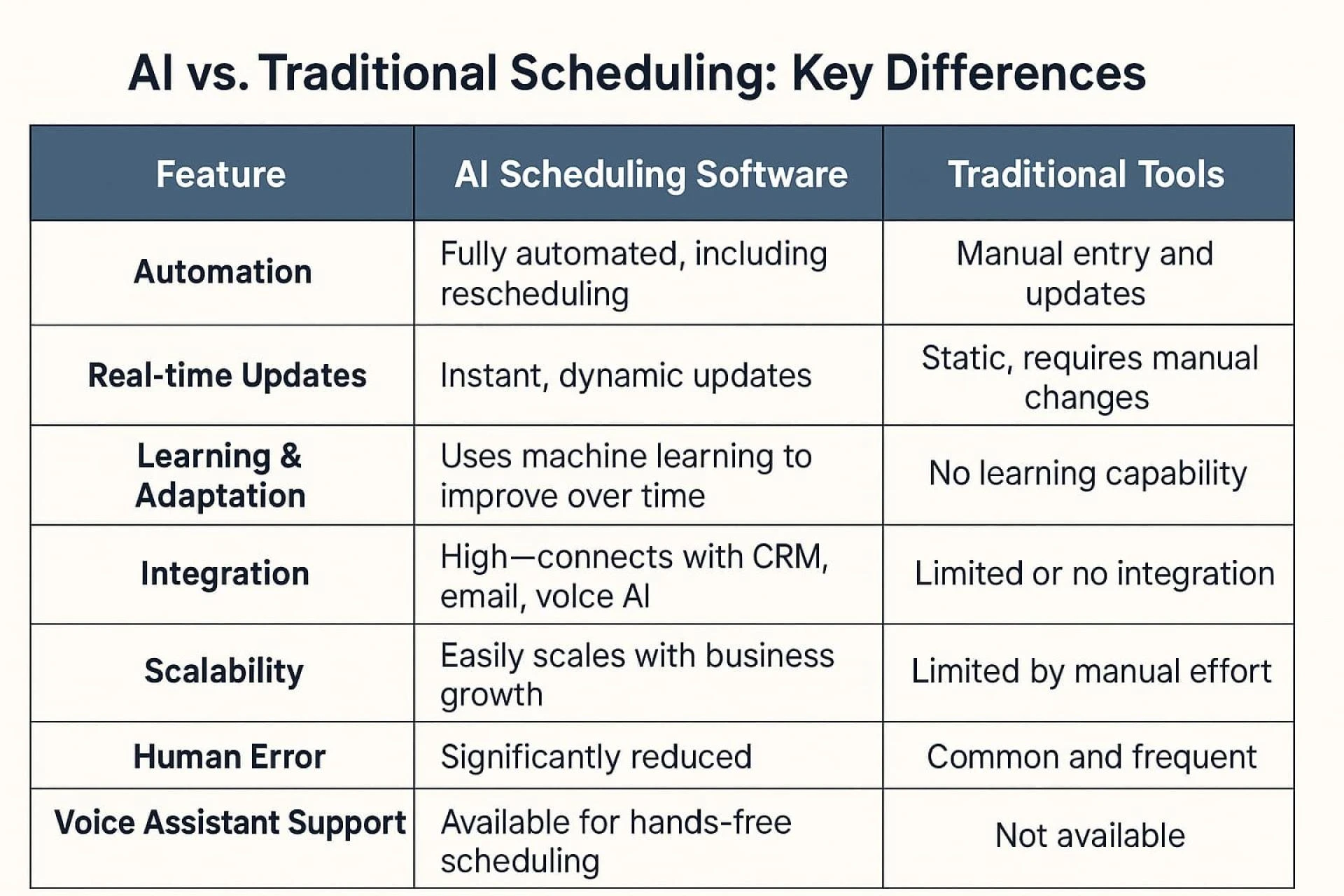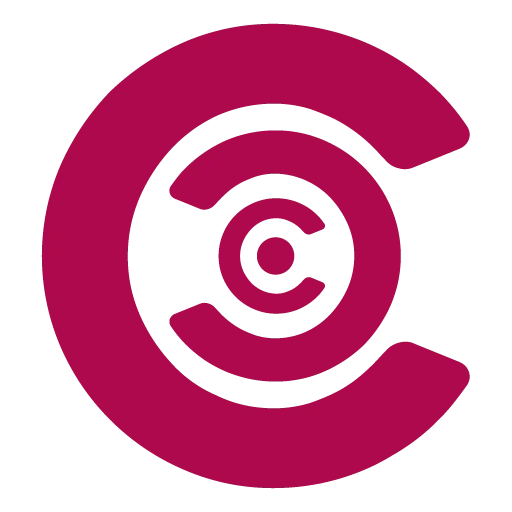Efficient scheduling is essential in today's fast-paced business world. Whether you run a small healthcare practice, a retail store, or a growing tech startup, managing appointments and meetings efficiently can dramatically improve productivity and customer satisfaction. Businesses now face a crucial choice: continue relying on traditional scheduling tools or adopt cutting-edge AI scheduling software. This article delves into the nuances of AI vs traditional scheduling, helping you understand which approach aligns best with your operational needs and growth goals.
What is AI Scheduling Software?
AI Scheduling Software is an advanced solution that uses artificial intelligence to automate the entire scheduling process. Unlike traditional tools that require manual input and constant oversight, AI-powered systems analyze your calendar, preferences, and constraints to intelligently book, reschedule, and optimize appointments.
Key features include:
- AI Appointment Booking: Automatically finds the best meeting times based on availability and preferences.
- AI Voice Assistant: Enables voice commands to schedule or adjust appointments, enhancing hands-free productivity.
- Predictive Scheduling: Uses historical data to anticipate scheduling conflicts and suggest optimal solutions.
- Integration with Business Tools: Seamlessly connects with CRM systems, email platforms, and communication apps to provide a unified scheduling experience.
For example, a voice AI for small business can answer calls, interact with customers, and book appointments without human intervention, freeing staff to focus on more strategic tasks.
Traditional Scheduling Tools Explained
Traditional scheduling methods range from physical planners and calendars to digital spreadsheets and basic calendar apps like Google Calendar or Outlook. These tools are straightforward and familiar but depend heavily on manual data entry and constant monitoring.
Limitations include:
- Susceptible to human error, including instances of double bookings or overlooked appointments.
- Lack of real-time updates when changes occur.
- No learning capability—cannot adapt or optimize based on past behavior.
While these tools may suffice for very small or simple operations, they often become inefficient as businesses scale or face more complex scheduling demands.
AI vs Traditional Scheduling: Key Differences

This comparison highlights how automated vs manual scheduling is not just a matter of convenience but a strategic difference impacting efficiency and error reduction.
Pros and Cons of AI Scheduling Software
Pros:
- Time Efficiency: Automates repetitive tasks like appointment confirmations and reminders, reducing administrative burden.
- Improved Accuracy: Minimizes scheduling conflicts and errors by cross-checking calendars and availability in real time.
- Enhanced Customer Experience: Enables quick booking and instant confirmations, improving client satisfaction.
- Scalability: Supports growing businesses by handling increased appointment volume without additional staff.
- Voice AI Integration: Facilitates hands-free scheduling through natural language processing, useful for multitasking environments.
- Data Insights: Provides analytics on scheduling patterns, no-shows, and peak times to optimize resource allocation.
Cons:
- Initial Setup and Training: Requires time and resources to implement and train staff on new systems.
- Cost Considerations: Subscription fees or licensing costs may be higher than free or low-cost traditional tools.
- Data Privacy Concerns: Storing sensitive scheduling and customer data in the cloud mandates strong security protocols.
- Dependence on Technology: System outages or bugs can disrupt scheduling processes unless backup plans are in place.
When to Choose Traditional Scheduling Tools
Despite the advantages of AI, traditional scheduling tools may still be appropriate in certain contexts:
- Small Teams or Solo Entrepreneurs: Where appointment volume is low and complexity minimal.
- Limited Tech Infrastructure: Businesses with poor internet connectivity or resistance to digital adoption.
- Budget Constraints: When upfront investment in AI tools is not feasible.
- Preference for Simplicity: Some users prefer the tactile or visual nature of paper planners or simple calendars.
However, these scenarios are increasingly rare as AI solutions become more affordable and user-friendly.
AI Scheduling Software for Businesses
The choice between AI scheduling software vs traditional tools for businesses can directly affect operational efficiency and customer engagement. For example:
- In healthcare, AI agents can manage patient appointments, send automated reminders, and reduce no-show rates, improving clinic throughput.
- Small businesses benefit from AI voice assistants that handle appointment booking calls, freeing staff to focus on service delivery.
- Retail and service providers use AI scheduling to optimize staff shifts and customer bookings, balancing demand with resource availability.
By automating routine scheduling tasks, businesses can reduce overhead costs and improve responsiveness, giving them a competitive advantage.
AI Development and the Future of Scheduling
The field of AI development in scheduling is rapidly evolving. Future innovations include:
- Predictive Analytics: AI will forecast appointment demand and suggest proactive scheduling adjustments.
- Advanced Voice AI: More natural and context-aware voice assistants will handle complex scheduling scenarios.
- Cross-platform Integration: Seamless coordination across multiple calendars, communication channels, and business systems.
- Personalization: AI will tailor scheduling preferences based on individual user behavior and priorities.
Businesses that adopt these innovations early will benefit from increased agility and customer satisfaction.
Conclusion
Choosing between AI scheduling software and traditional tools depends on your business size, complexity, and growth plans. AI-powered scheduling offers unmatched automation, accuracy, and scalability, making it ideal for businesses aiming to enhance productivity and customer experience. Traditional tools may still serve simple needs but often fall short in dynamic environments. Embracing AI scheduling is a forward-looking investment that can transform how your business manages time and resources.


